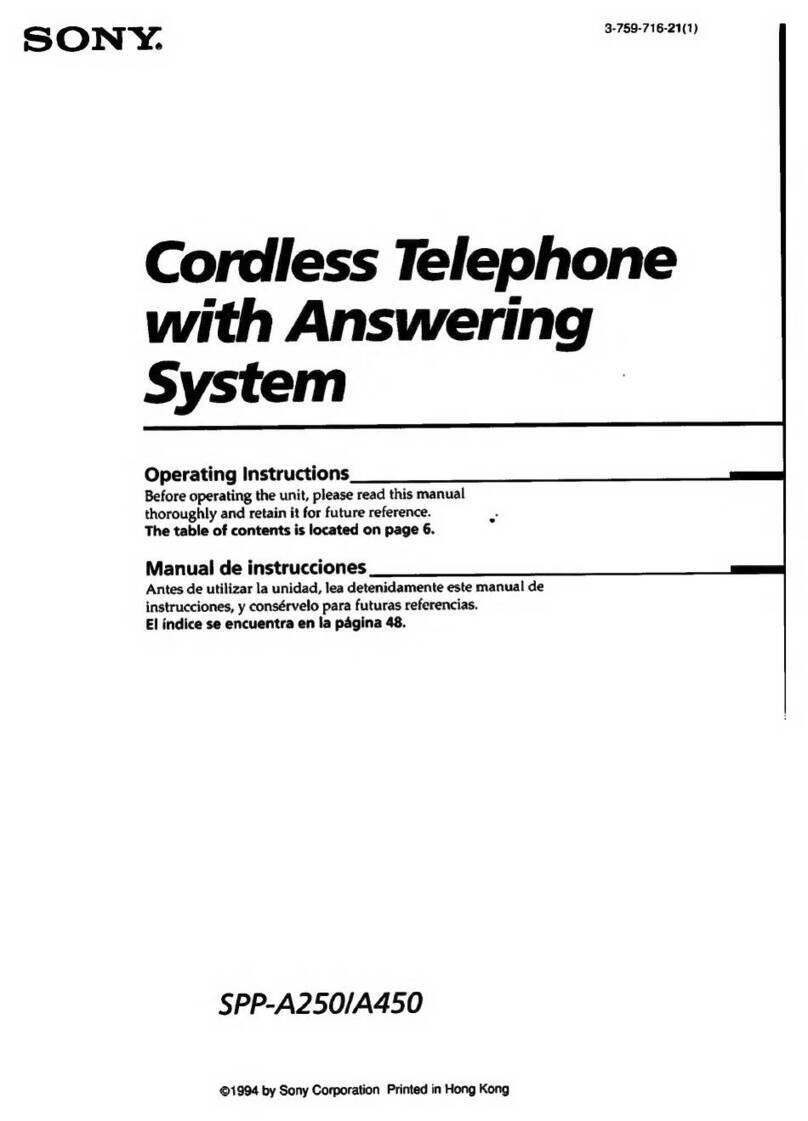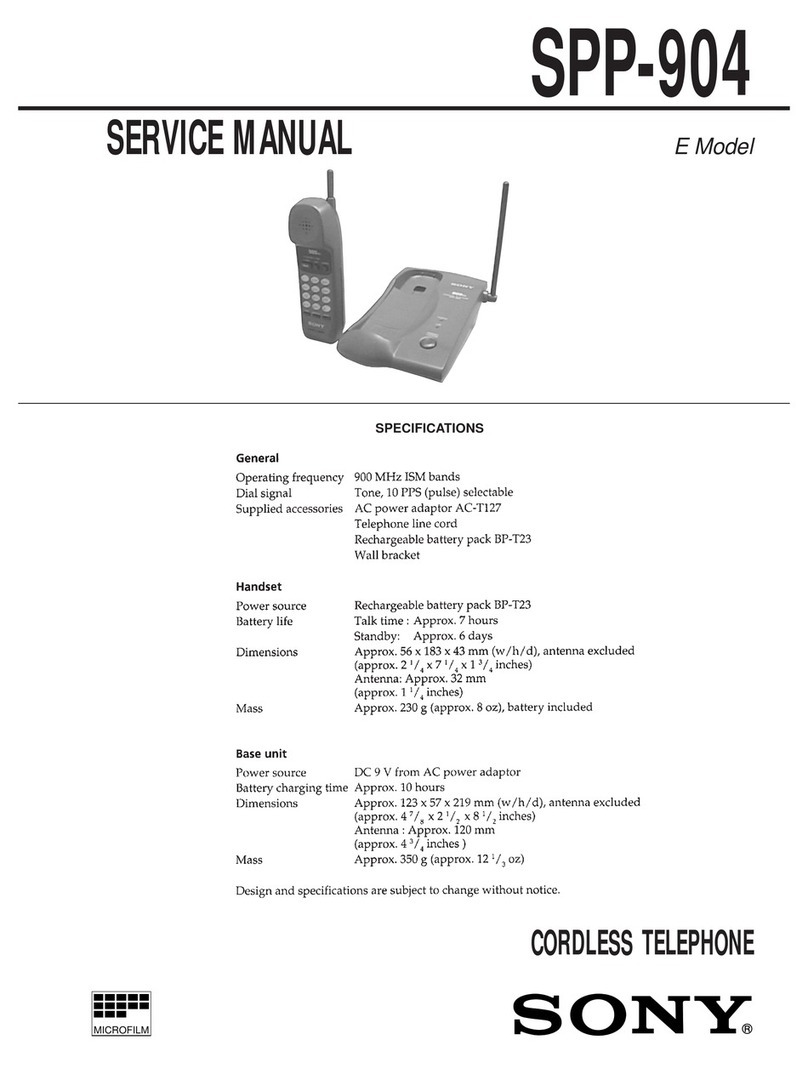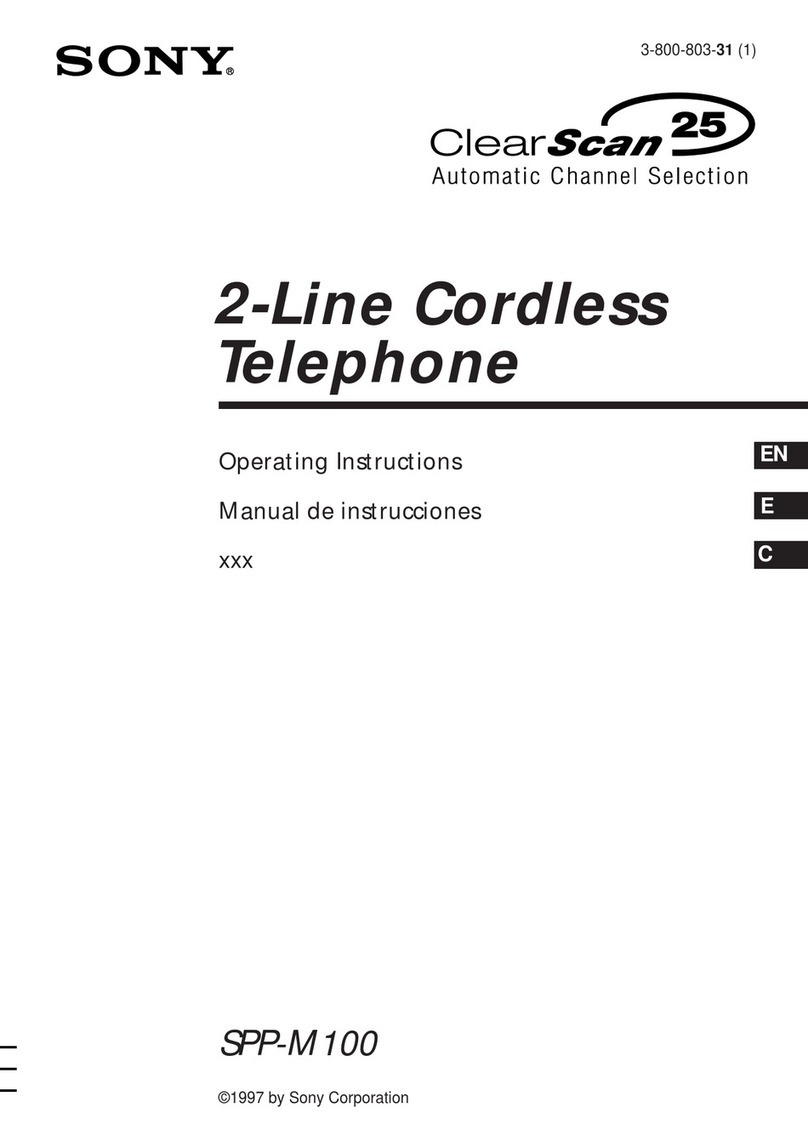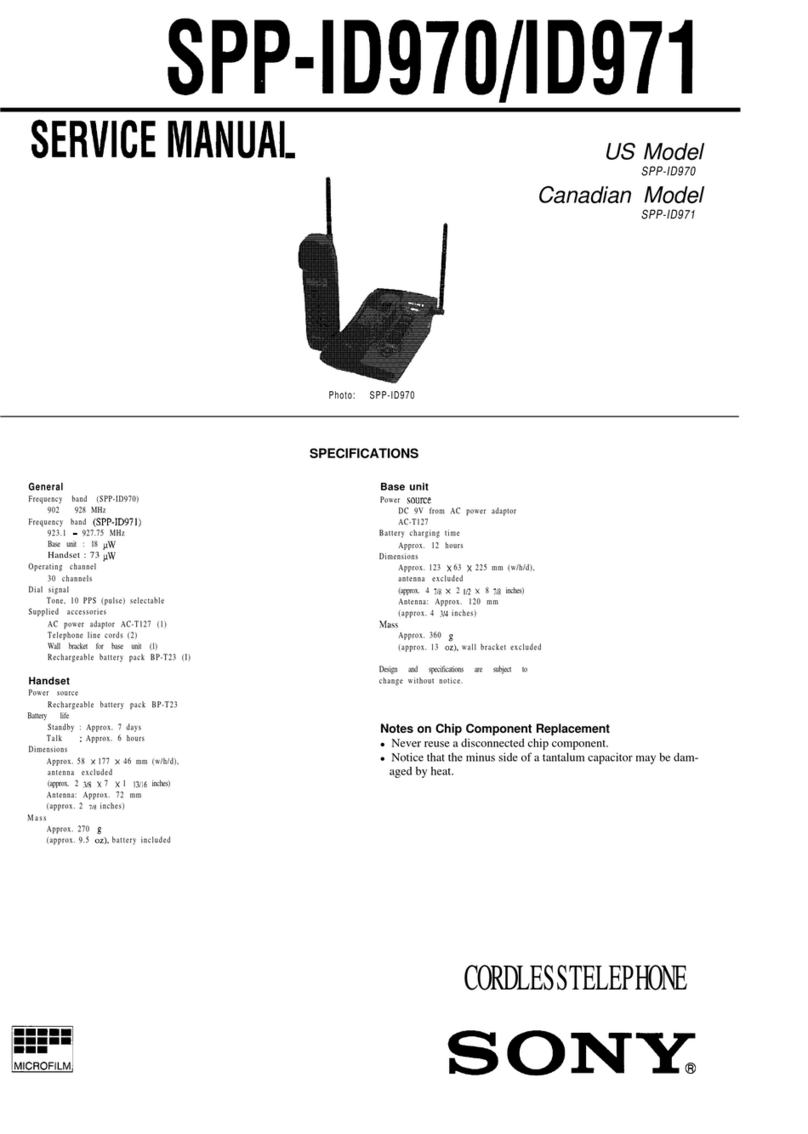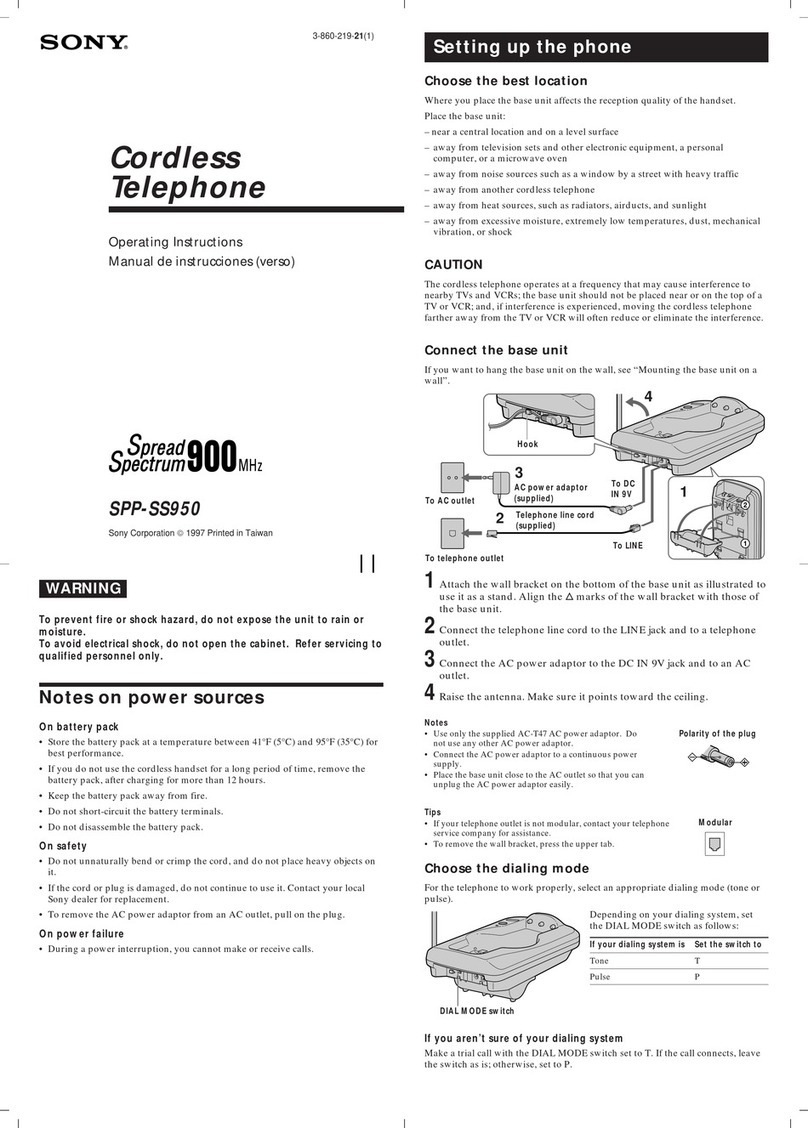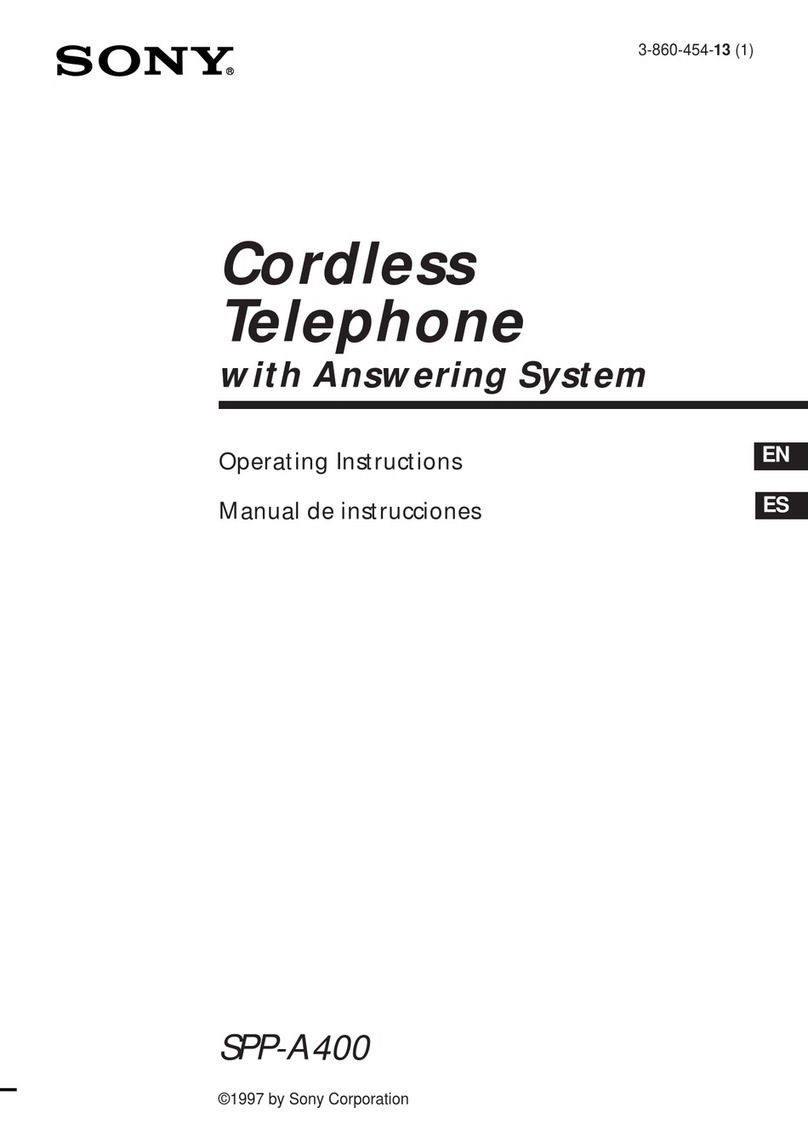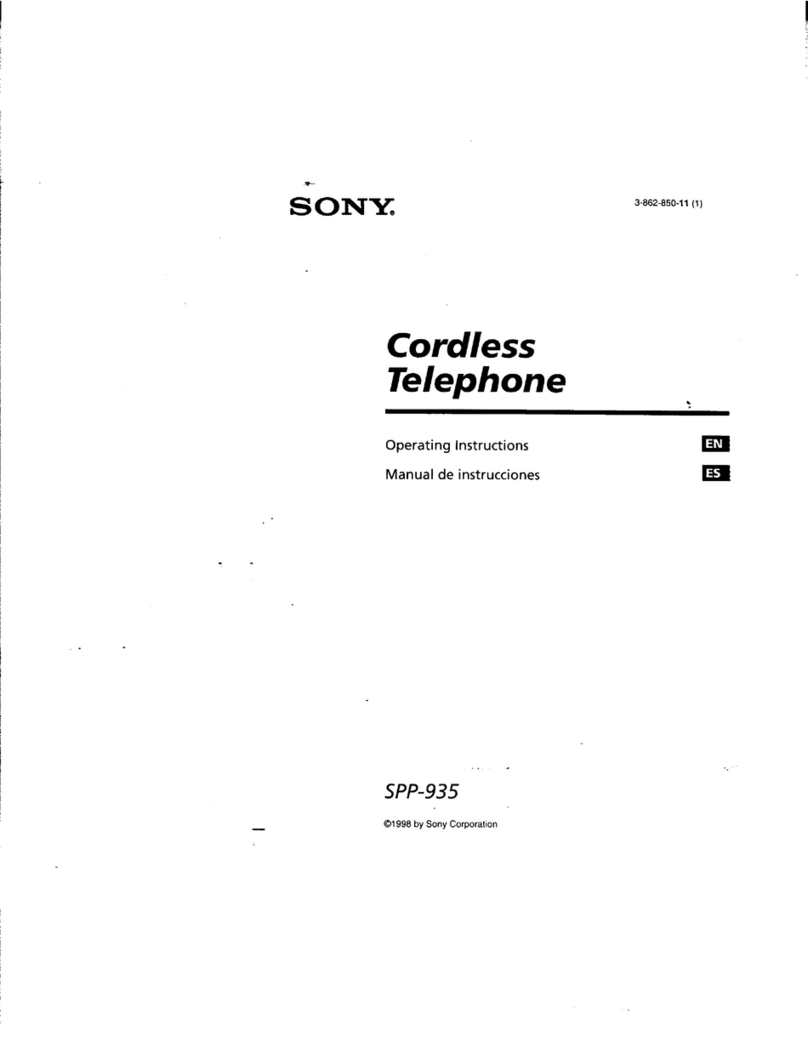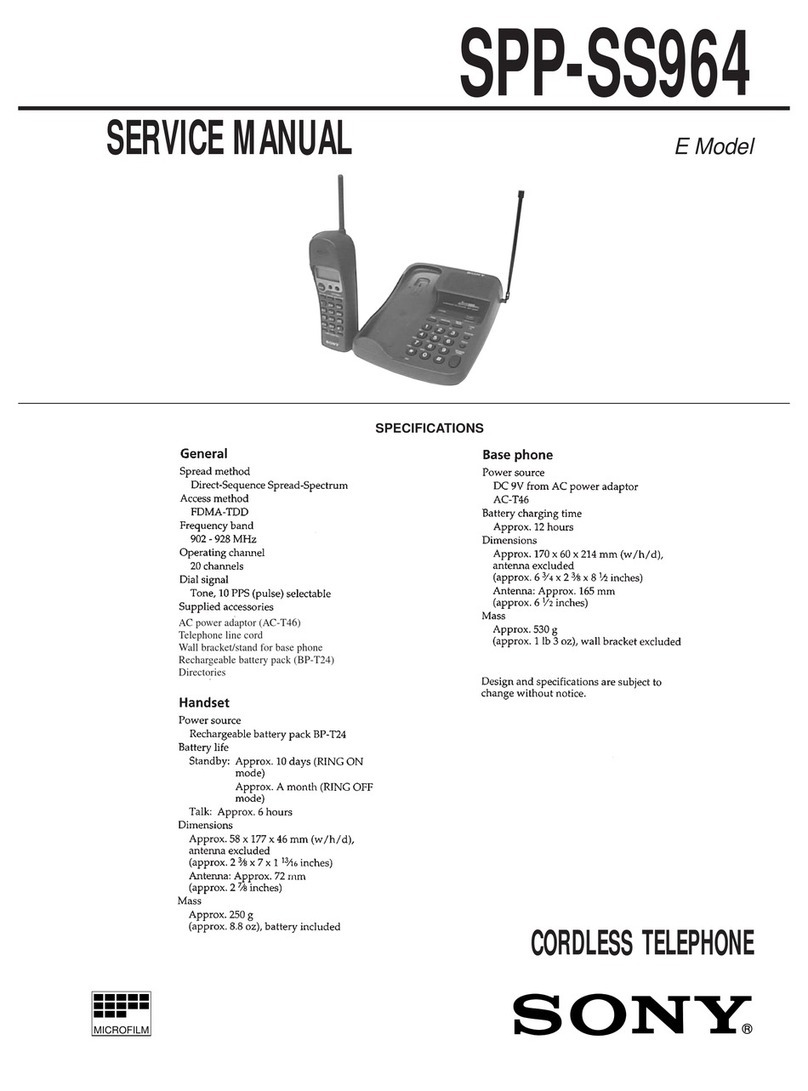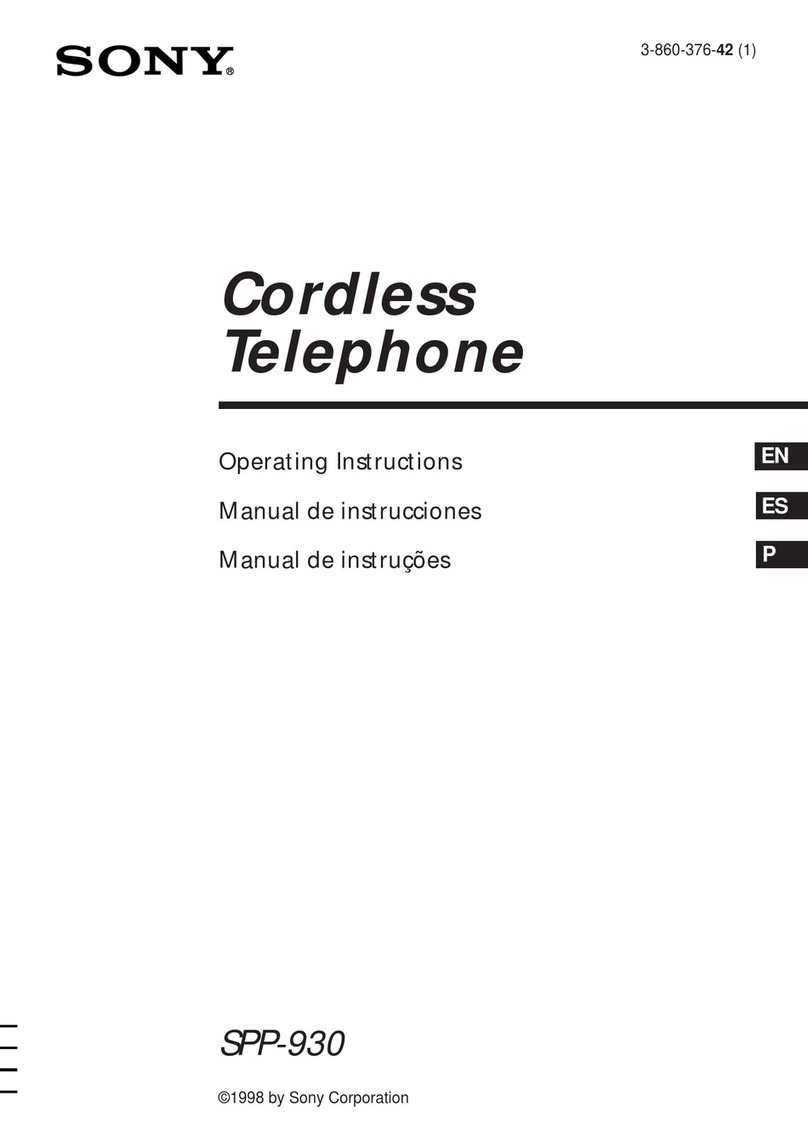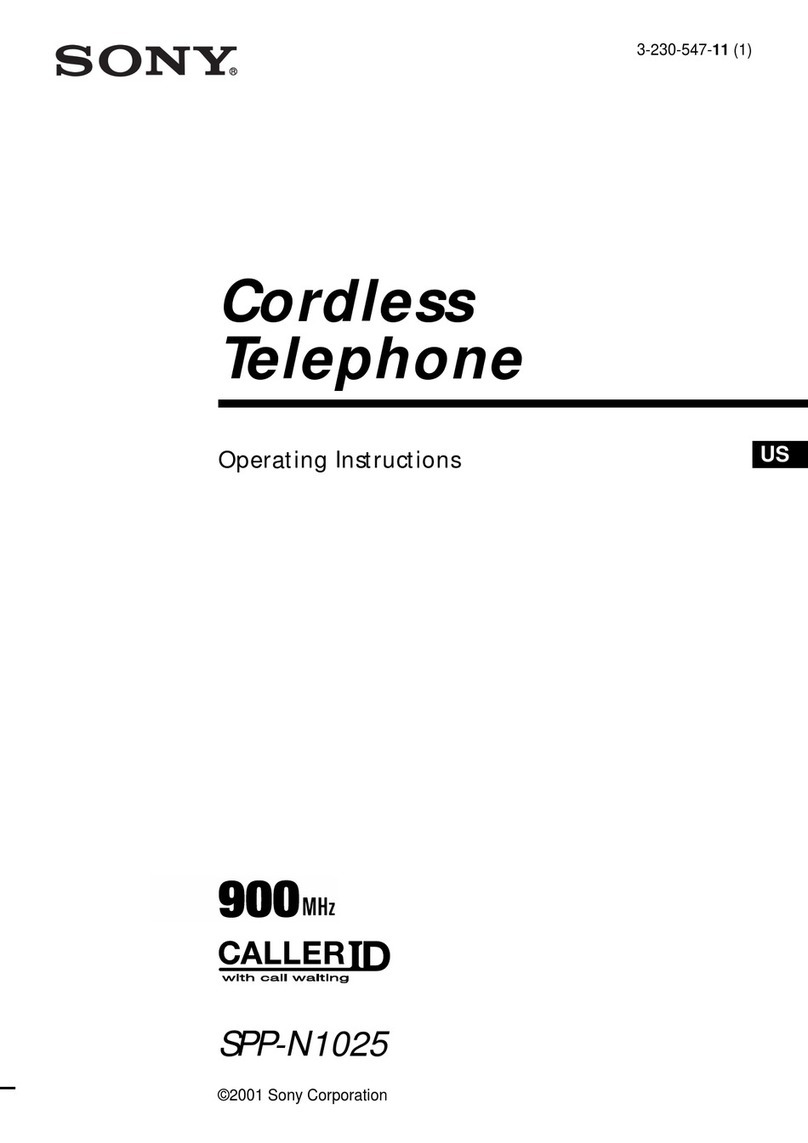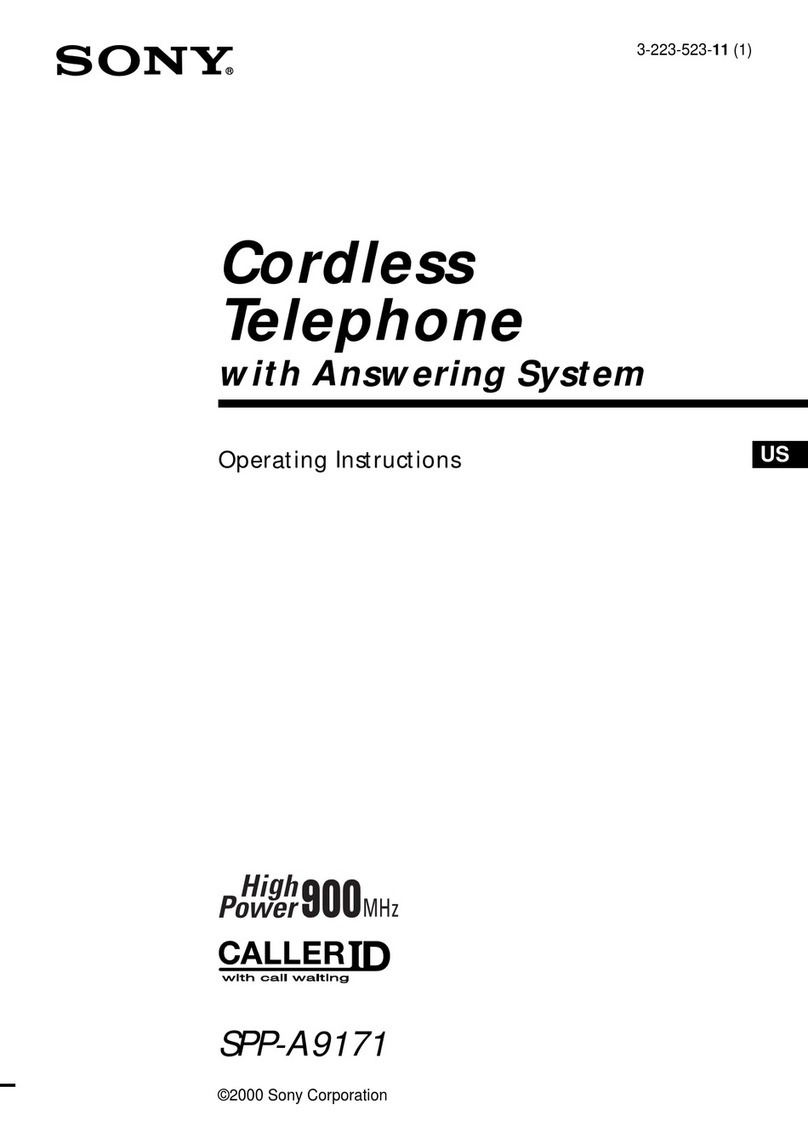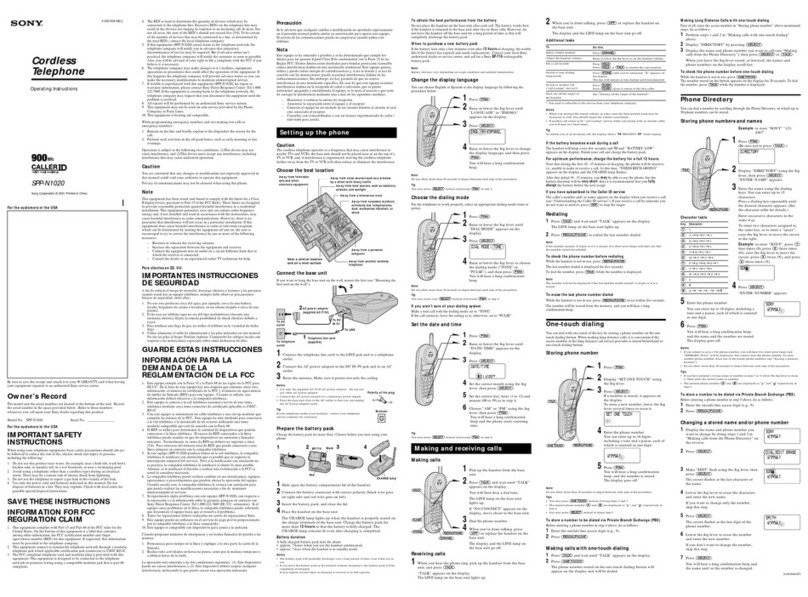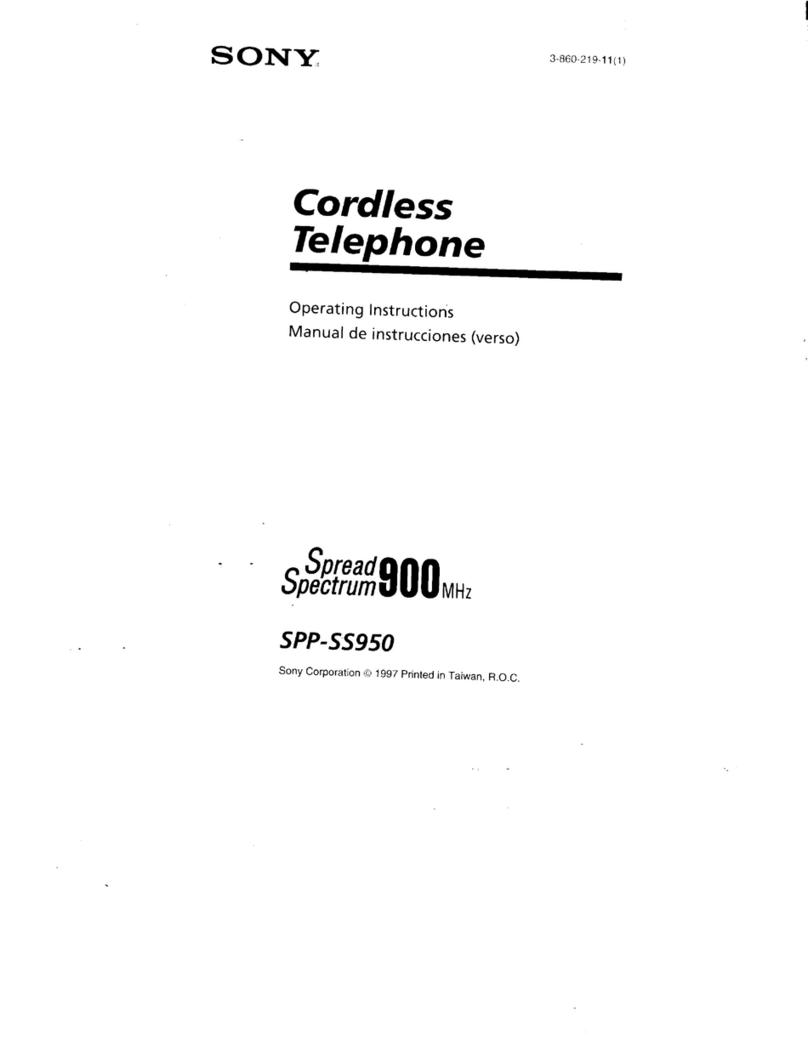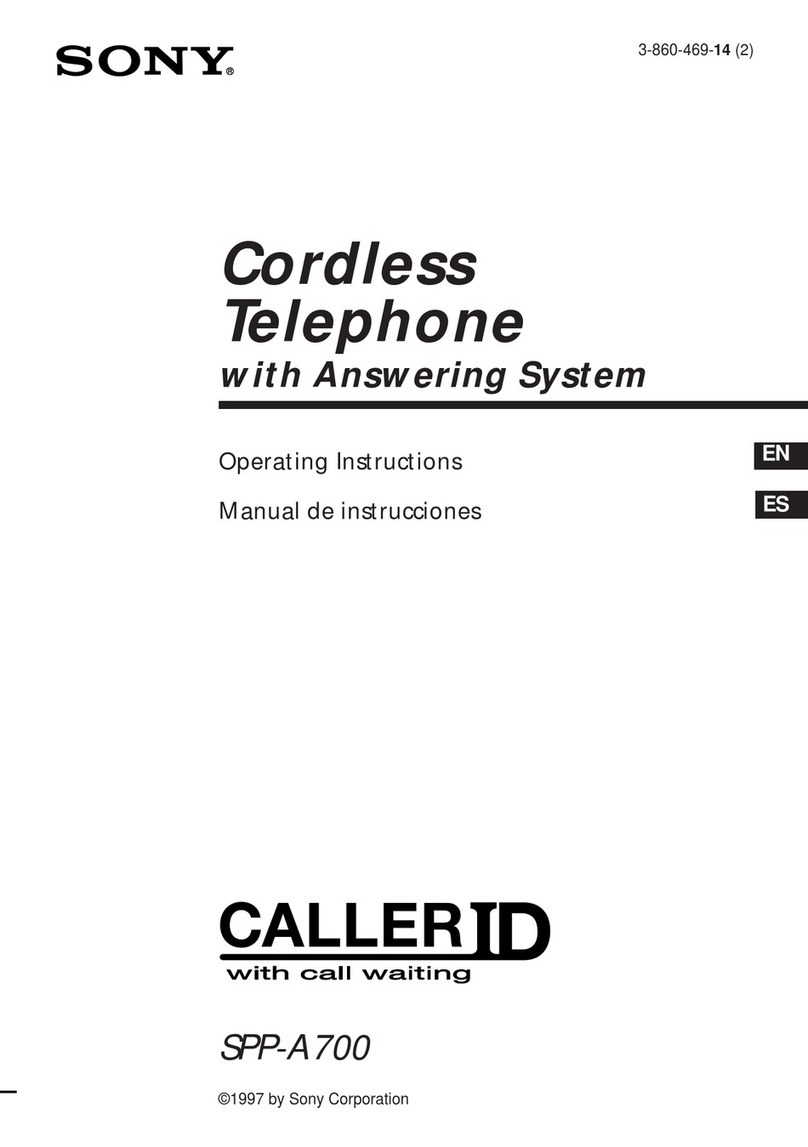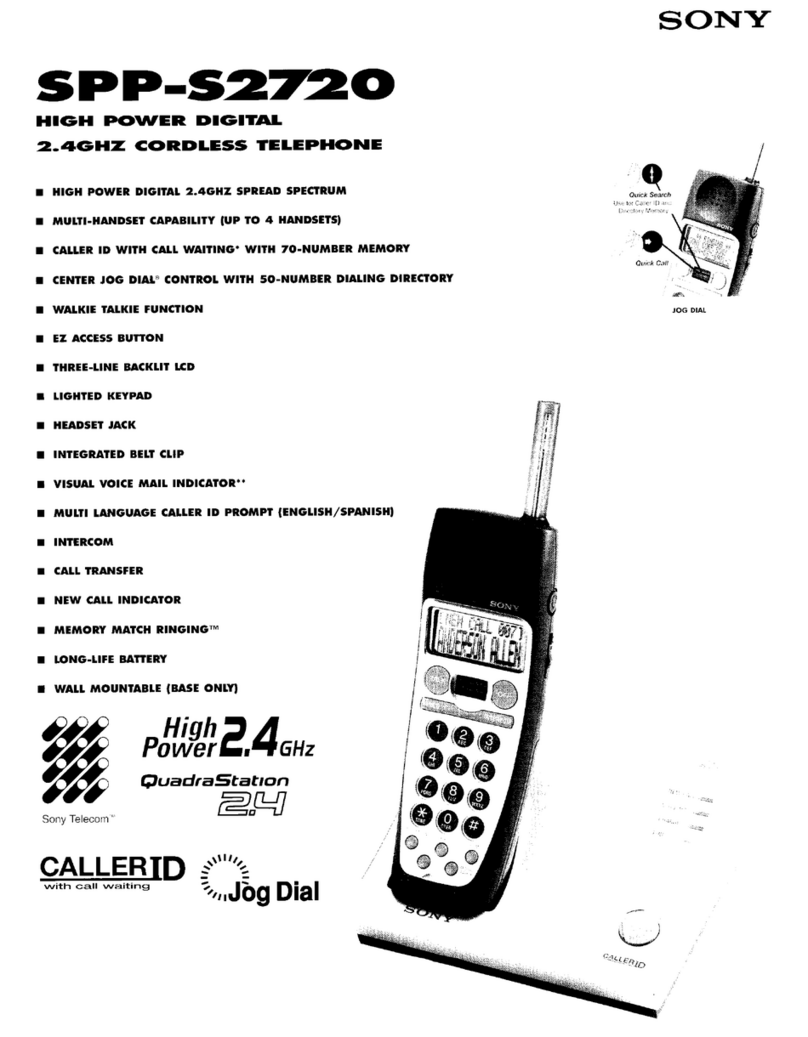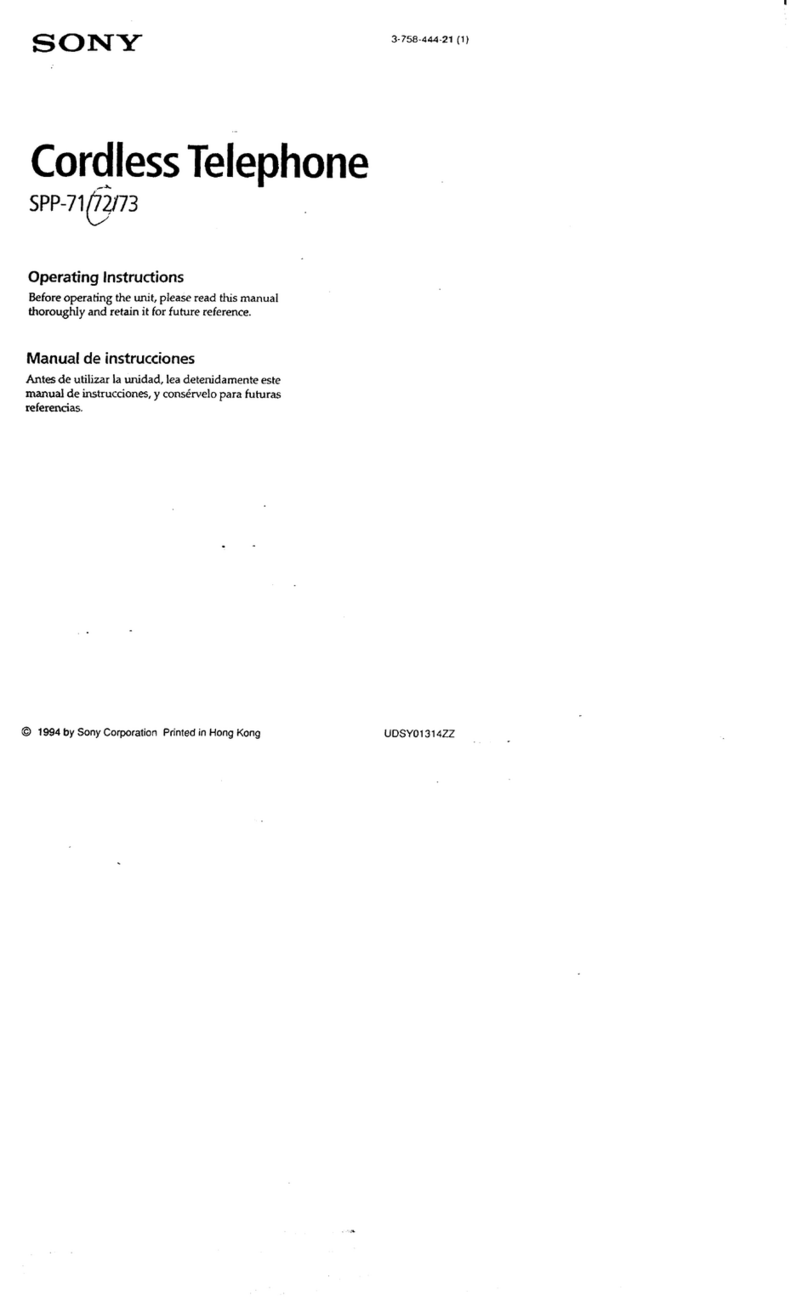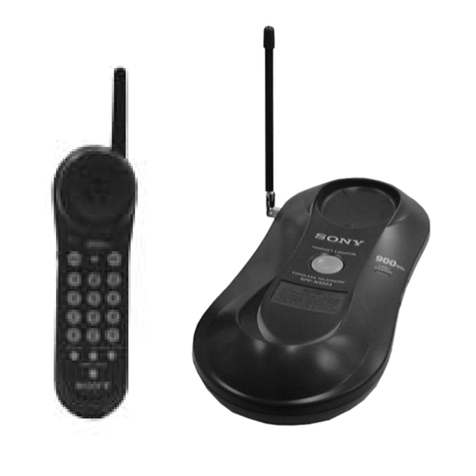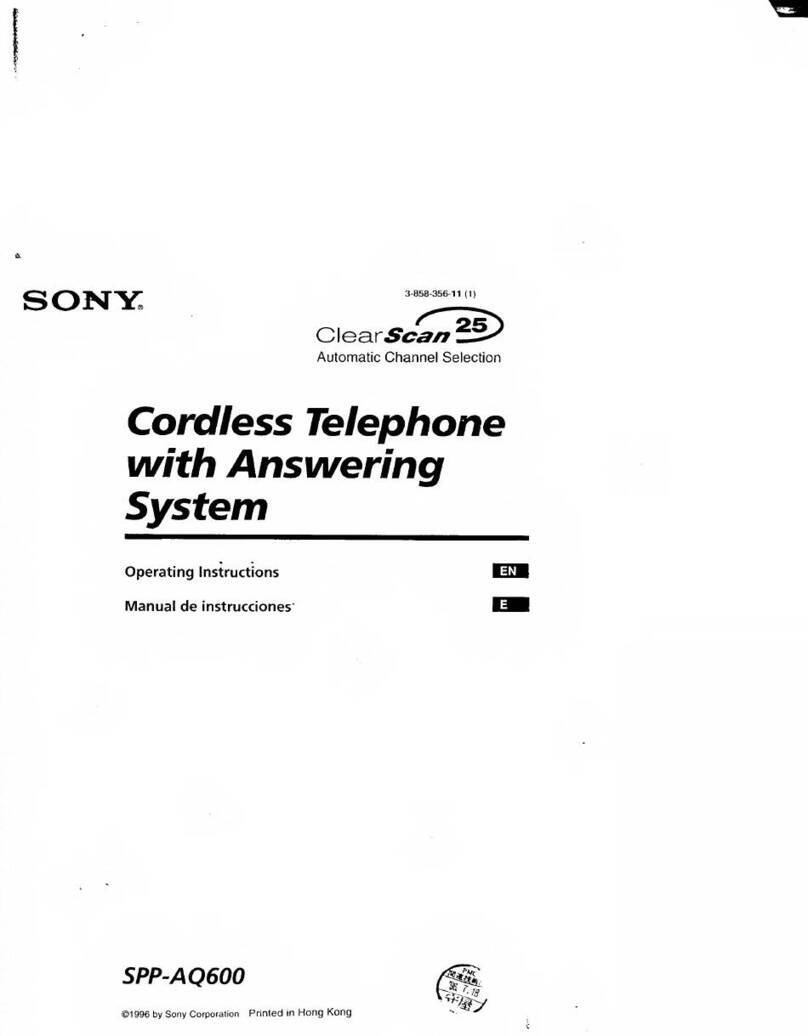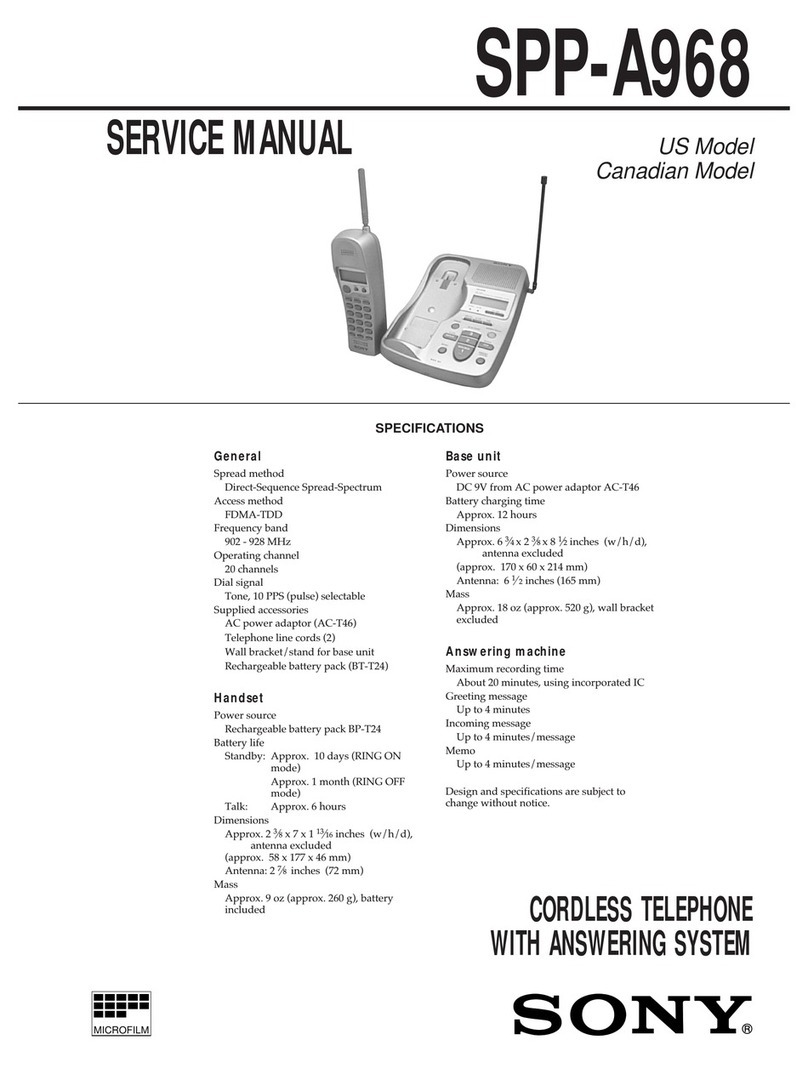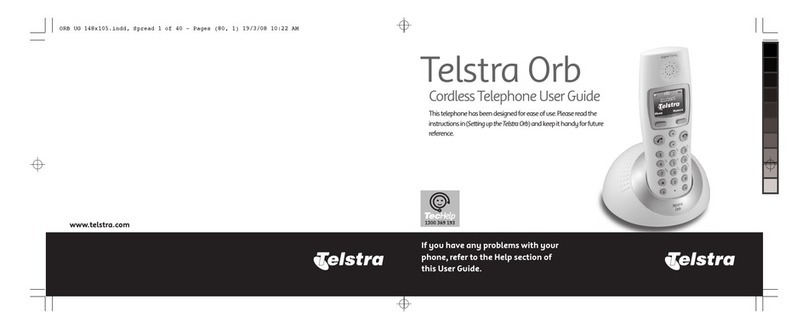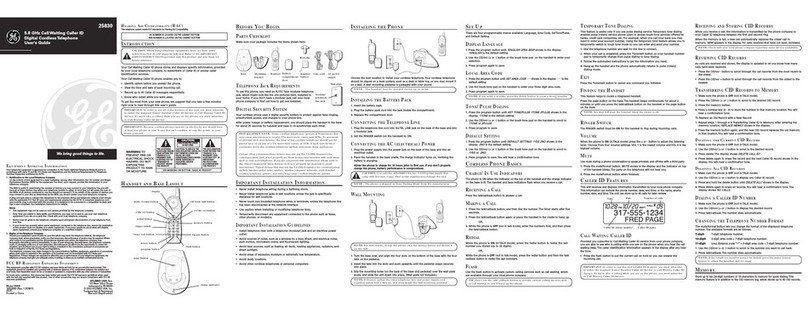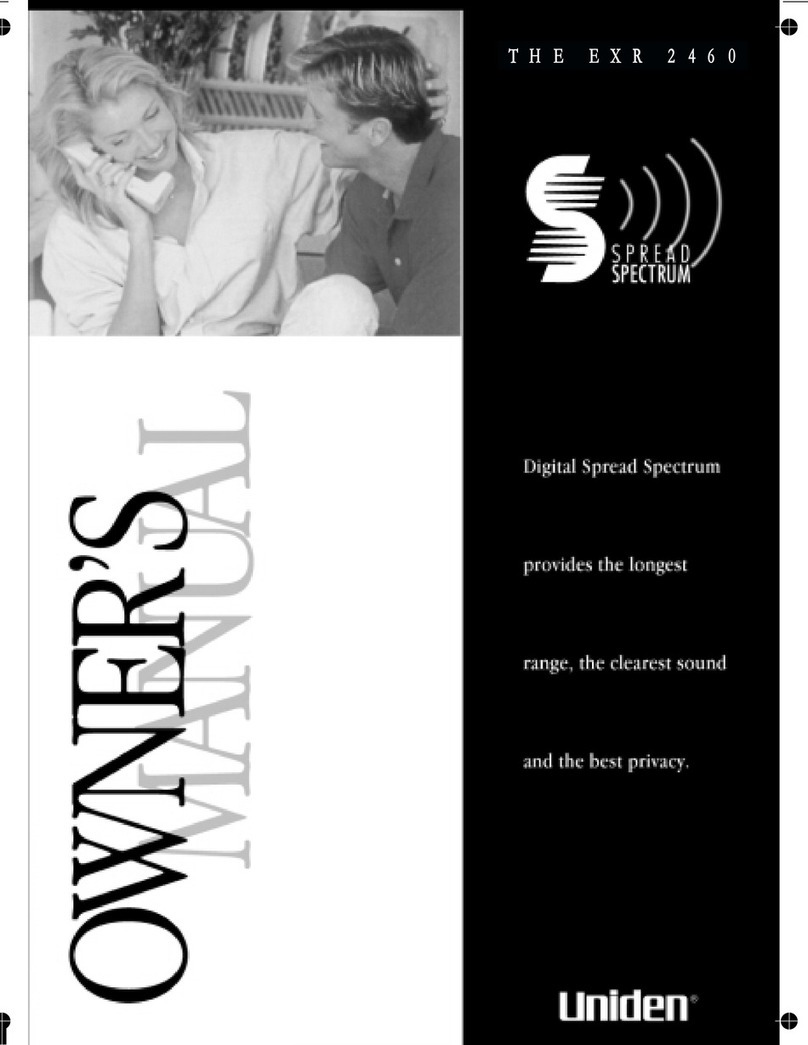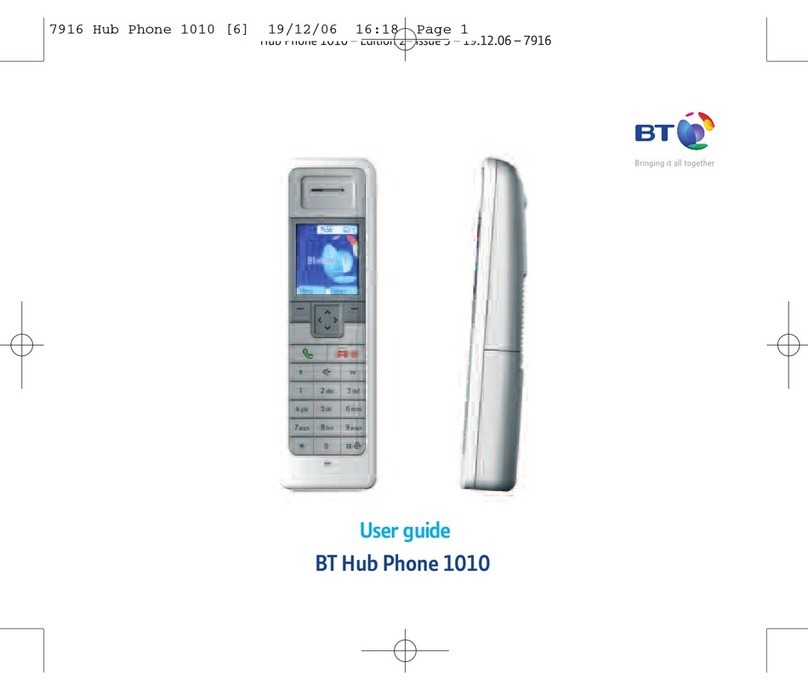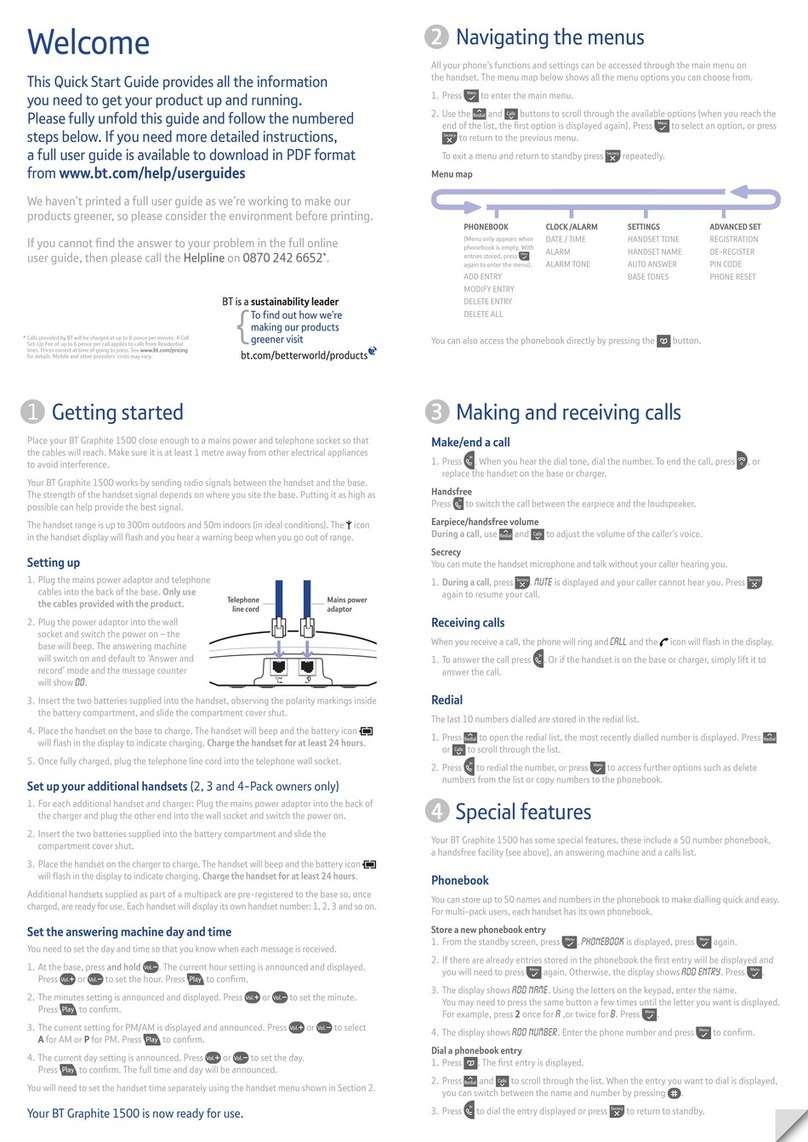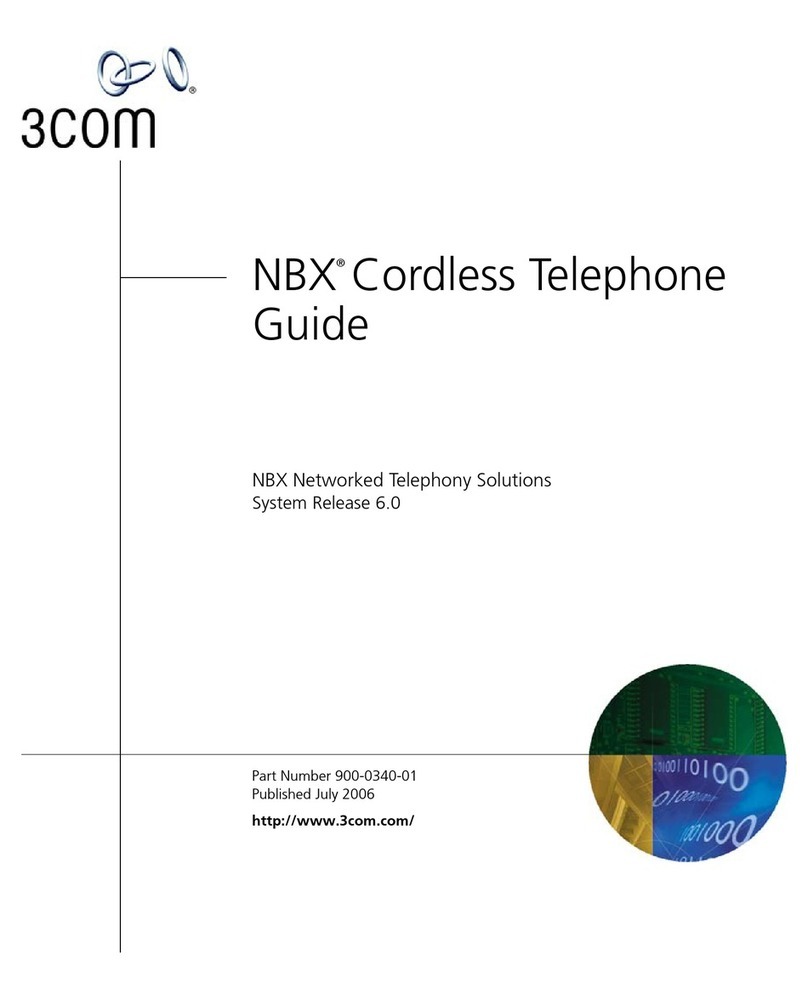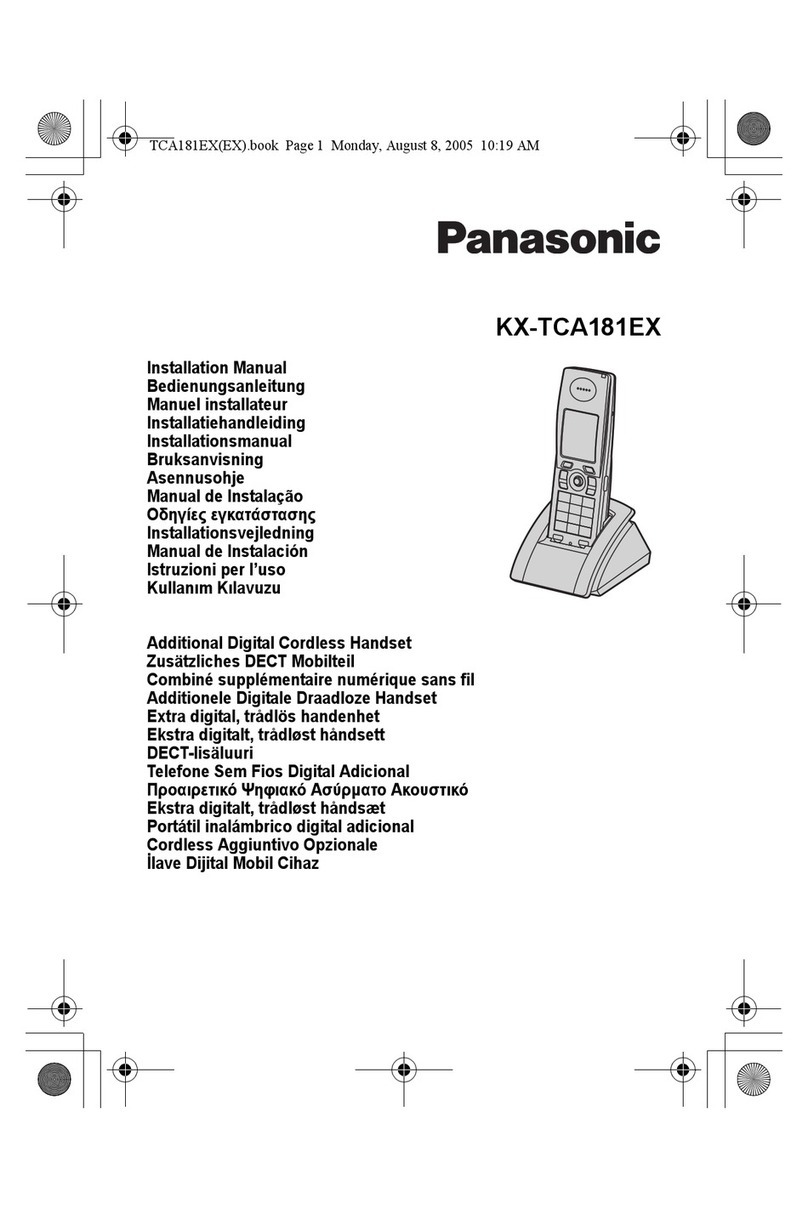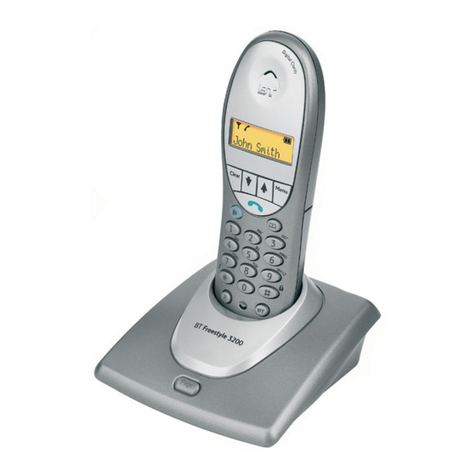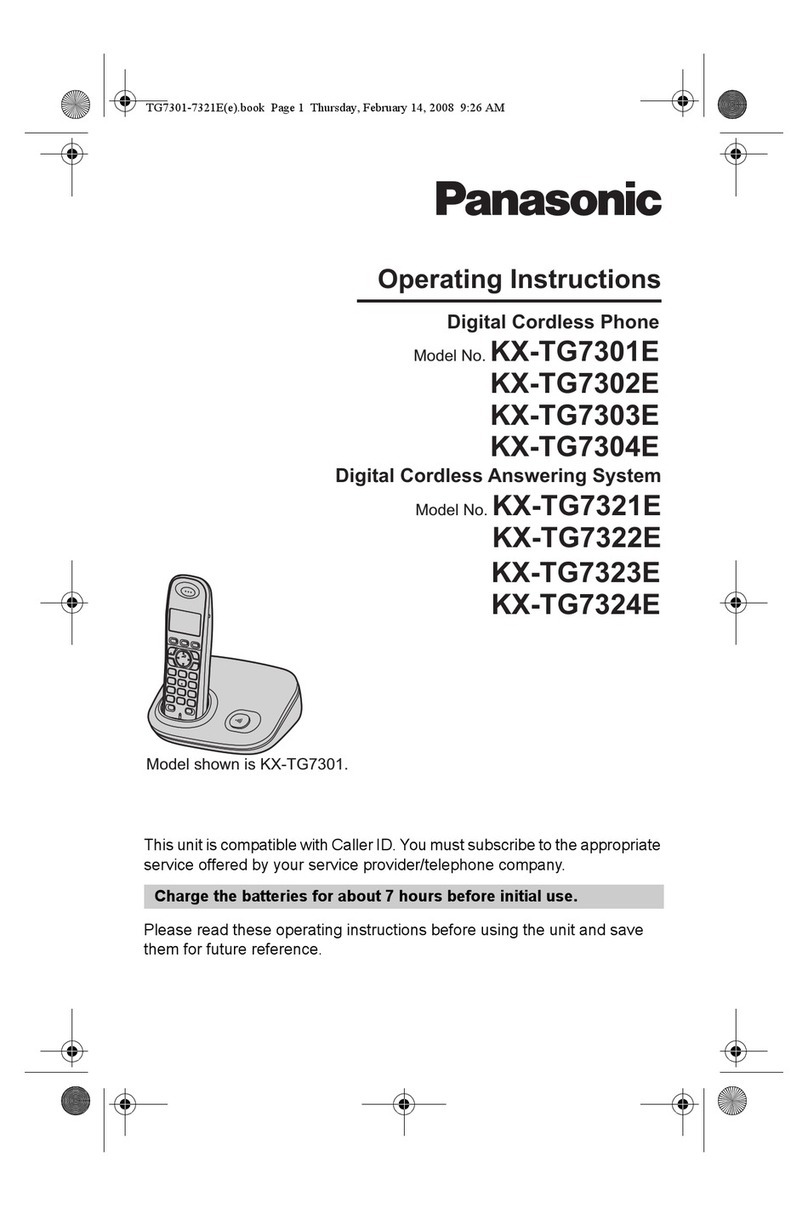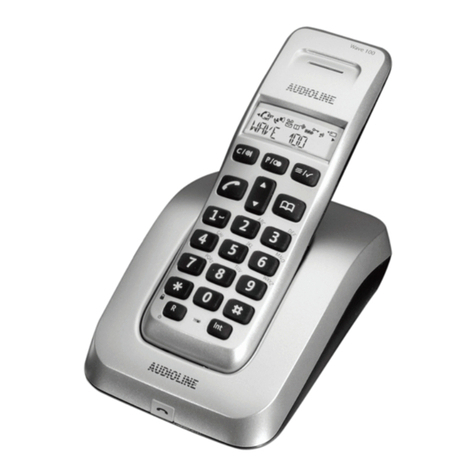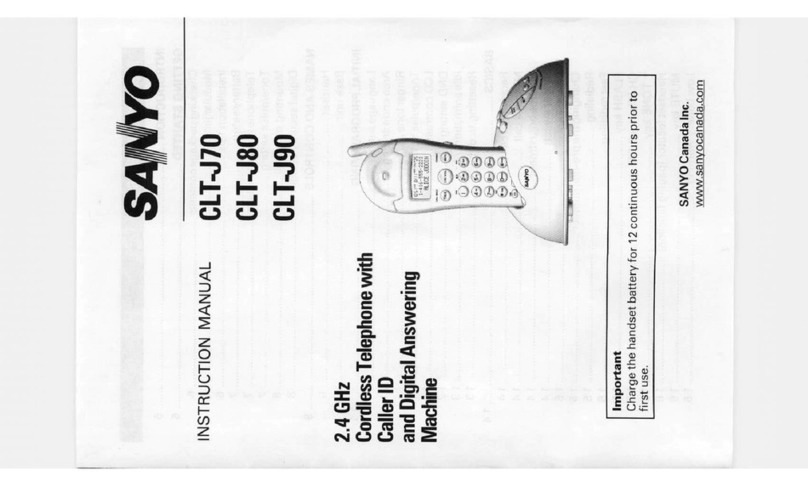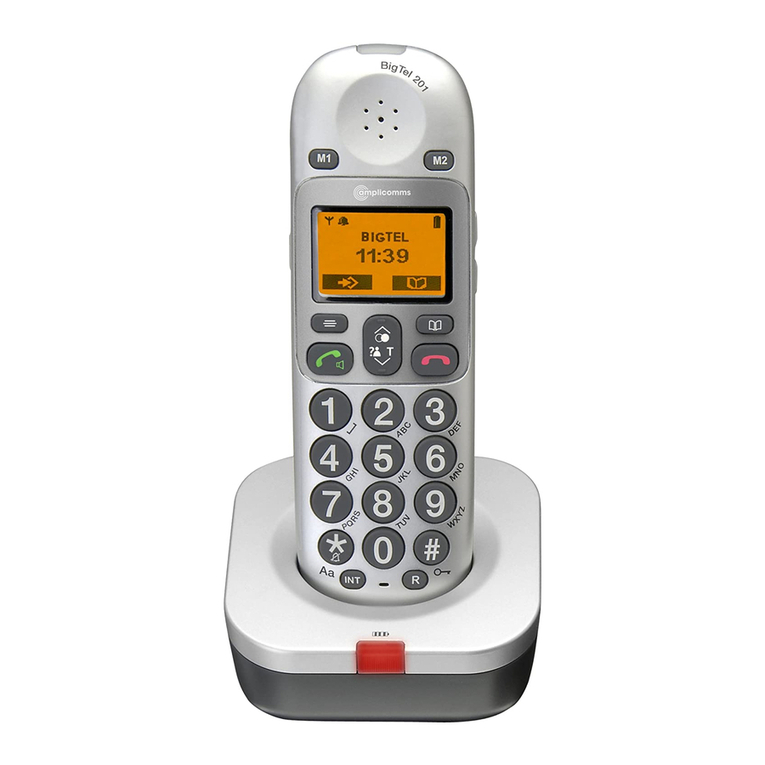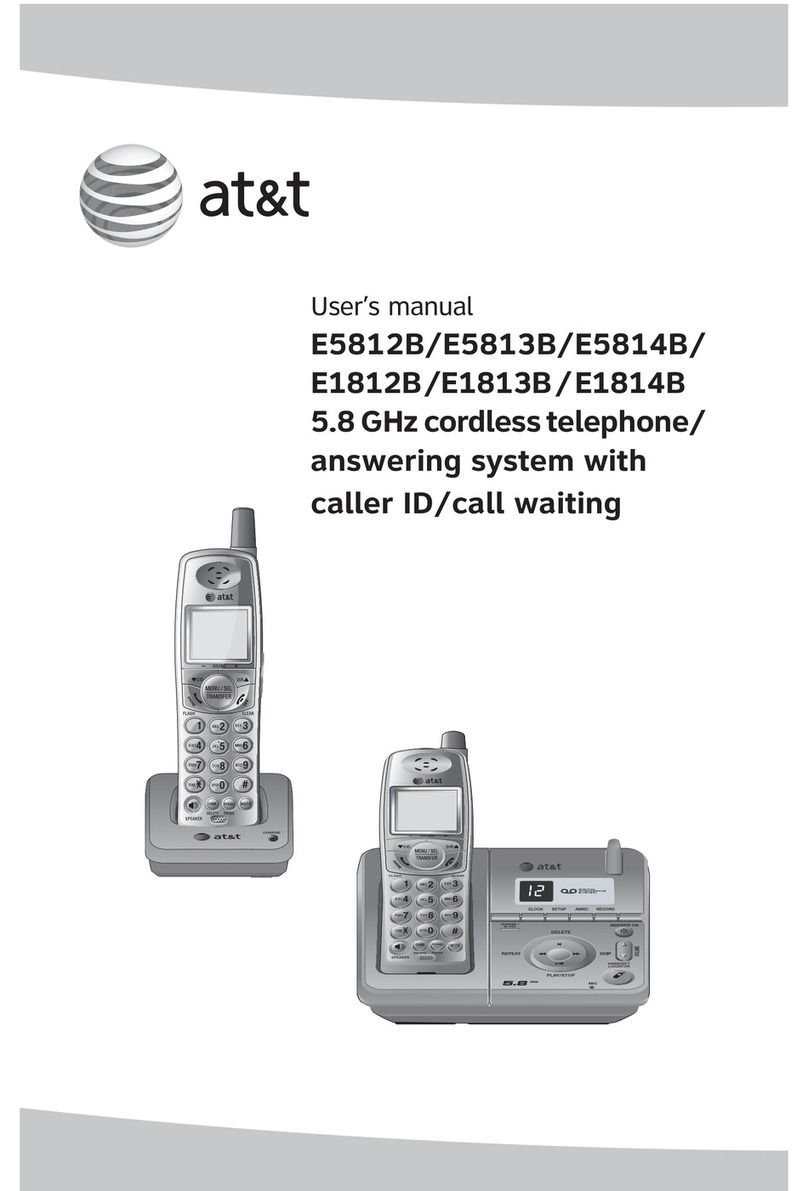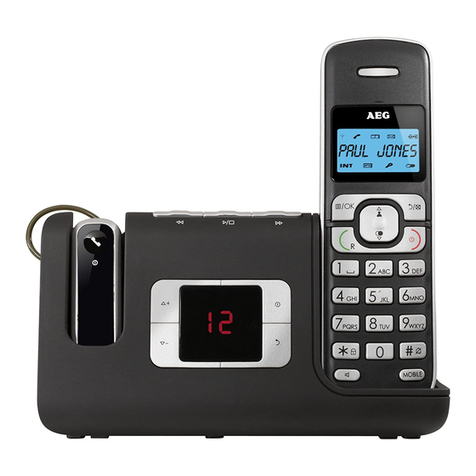– 10 –
4-1. BASE UNITTEST MODE A
[Start-up]
1. Set [DIALMODE] switch to the P (PULSE) side.
2. With [PAGE] button kept pressed, reset the POWER ON (con-
nect theAC adapter plug) and return [DIALMODE] switch from
P (PULSE) side to T (TONE) side, then again to the P (PULSE)
side.
3. Release the [PAGE] button, and the Test Mode A will start.
4. When the Test Mode A started, the Dial Test is carried out.
5. If [DIALMODE] switch is changed over from P (PULSE) to T
(TONE) side, the base set goes in Test Mode IdleA status.
[DialTest]
1. When the Test Mode started, a line is connected.
2. “0” is output with 10pps (PLUSE) signal.
3. After 2 seconds, “1” “4” “8” “#” are output with DTMF
(TONE) signals.
4. Then, the line is placed in the busy status.
[TDDTest Mode on Each Channel]
1. In the Test Mode IdleA status, the statused of respective blocks
are as follows:
Radio block – TDD mode (Master timing, 1CH)
Audio block – Line busy status
2. Each time [PAGE] button is pressed, channels are changed over
as follows:
Test Mode
Idle A →2CH →3CH →4CH →. . . →20CH
(1CH)
↑
3. On the channels 2 to 20, the statuses of respective blocks are as
follows:
Radio block – TDD mode (Slave timing)
Audio block – Line busy status
[Charging Detection Test, ARTO Pin Output Test, and
EEPROM Clear]
1. In the Test Mode IdleA status, if charging is detected, a rectan-
gular wave of 2.4 kHz is output from the IC751 Pin #¢ (ARTO
pin).
2. At this time, the contents of the EEPROM memory are all
cleared.
SECTION 4
TEST MODE
4-2. BASE UNITTEST MODE B
[Start-up]
1. Set [DIALMODE] switch to the T (TONE) side.
2. With [PAGE] button kept pressed, reset the POWER ON (con-
nect theAC adapter plug) and return [DIALMODE] switch from
T (TONE) side to P (PULSE) side, then again to the T (TONE)
side.
3. Release the [PAGE] button, and the Test Mode B will start.
4. In the Test Mode B, two kinds of idle statuses can be selected
depending on the[DIALMODE] switch setting.
DIAL MODE switch Idle statuses
T (TONE) side Test Mode Idle B-1 *1
P (PULSE) ise Test Mode Idle B-2 *2
*1: Radio block – TDD mode (Master timing)
Audio block – Line busy status
*2: Radio block – Standby status
Audio block – Line open
[Charging Detection Test, ARTO Pin Output Test, and
EEPROM Clear]
1. In the Test Mode Idle B-1 status, if charging is detected, a rect-
angular wave of 2.4 kHz is output from the IC751 Pin #¢
(ART0 pin).
2. At this time, the contents of the EEPROM memory are all
clearered.
[Terminating Signal DetectionTest]
1. In the Test Mode Idle B-2 status, if a terminating signal is
detected, H →L →. . . are output from the IC751 Pin *ª in
synchronization with H →L →. . . of terminating signal de-
tected.
[Continuous Receive Mode, Continuous Transmit Mode
andTDDTest Mode with High, Mid, and Low Power]
In the Test Mode Idle B-2 status, each time [PAGE] button is pressed,
the mode changes as follows:
[PAGE] button Radio Block
pressing times
1 CONT. RECEIVE (1CH, LNA ON,AGC ON)
2 CONT. RECEIVE (10CH, LNA ON,AGC ON)
3 CONT. RECEIVE (20CH, LNA ON,AGC ON)
4 CONT. TRANSMIT (1CH, High power)
5 CONT. TRANSMIT (1CH, Mid power)
6 CONT. TRANSMIT (1CH, Low pwer)
7 CONT. TRANSMIT (10CH, High pwer)
8 CONT. TRANSMIT (10CH, Mid pwer)
9 CONT. TRANSMIT (10CH, Low pwer)
10 CONT. TRANSMIT (20CH, High pwer)
11 CONT. TRANSMIT (20CH, Mid pwer)
12 CONT. TRANSMIT (20CH, Low pwer)
13 TDD Mode (Master timing, 1CH, High power)
14 TDD Mode (Master timing, 1CH, Mid power)
15 TDD Mode (Master timing, 1CH, Low power)
16 Return to Test Mode Idle B-2
* In the statuses of 1 – 15, the audio block is placed in the line busy status.
